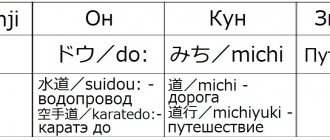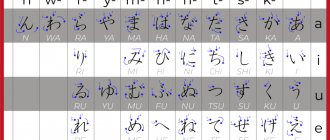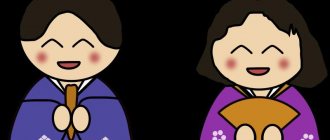Asian languages always seem incredibly difficult to learn for foreigners. This is due to Japanese, Chinese and Korean characters, the sight of which residents of other countries are not accustomed to. They create the illusion of the impossibility of understanding this language, which is fundamentally untrue. In practice, you just have to get used to them, and the structure of the language itself will begin to seem logical, structured and understandable. In many aspects, these languages are even simpler than the representatives of the Indo-European group. You just need to have enough desire and apply the required degree of diligence to their study.
Which language is easier and why?
In the process of choosing a language, everyone will certainly wonder what is easier to learn: Japanese, Korean or Chinese. Despite the fact that among them there is no unequivocally the easiest in all respects, one or the other is indeed easier than the others in certain moments. Thus, Chinese is distinguished by the simplicity of its grammar and the logical formation of sentences. Korean is the simplest written language. Japanese - phonetics familiar to foreigners and the ability to analoguely write any hieroglyph in the alphabet. The main difficulties in learning Chinese arise from the huge number of characters and tone system. In Korean - due to changing endings due to complex grammar. In Japanese - due to the presence of three writing systems at the same time, as well as the separate existence of colloquial and respectful forms, which are not at all similar.
Japanese
The first big difference is at the grammar level. Chinese and Korean do not have gender, number, articles or conjugations. The Japanese language has grammar.
Second, Japanese uses Chinese characters. But the characters there are not those that are studied when learning Chinese.
Chinese characters in Japanese
These are either traditional Chinese characters or characters that have been simplified. Chinese underwent a reform to simplify its characters in the 1970s, as did Japan. But the Japanese, naturally, did not make a copy of the Chinese, but introduced their own simplifications.
But next to these hieroglyphs, the Japanese phonetic alphabet remained. And even two alphabets: Iragana and Katakana. One is used to write Japanese words. And the other - the same phonetic alphabet, but with different icons, is used for foreign words.
Japanese phonetic alphabet
So, two phonetic alphabets, 2000-5000 Chinese characters and letters from our Latin alphabet!
That is, the Japanese use four different writing systems simultaneously in one text.
Features that are taken into account when choosing
Ease of learning is not the only factor that people usually pay attention to. Foreign languages are also selected based on criteria such as:
- planned move;
- employment opportunity; good prospects for career growth;
- passion for the culture of the country;
- presence of resident friends;
- which one is more useful financially;
- difference in the number of carriers.
This is not a complete list of possible aspects. Some of them are generally recognized, others are individual. In the same way, some of them can be measured and objectively compared, while others are purely subjective. Further consideration of language differences can help with choosing which one is best to learn.
Tones and pronunciation
Among these three languages, only Chinese is tonal, which helps to distinguish it by ear. Each syllable in this language is pronounced at a certain pitch. This is important because the nature of the sound in this case determines the meaning of the word. There are four of them in Chinese, and if the phoneme mā in the first tone means “mother”, then in the second - má, “hemp”, in the third - mǎ, “horse”, and in the fourth - mà, “scold”. It is quite difficult to learn tones thoroughly.
Japanese and Korean are not tonal languages, but have musical accents. Which means that intonation can also change the meaning of a word, but much less often and only in the case of the last syllables of the word, and not each of them.
ABC
There is no formal alphabet in the Chinese language. The main role is given to knowledge of hieroglyphs. But there is phinyin - a system of phonetic transcription. Most often it is used by parents, because with its help children learn more usefully and faster. For the same purpose, the study of the phonetic alphabet is also common among foreigners.
In Korea, there is a full-fledged alphabet. It is called Hangul and consists of forty letters. Vowels are divided into three categories:
- basic (ㅣ, ㅡ);
- simple (ㅑ,ㅗ,ㅛ,ㅜ,ㅠ);
- complex (ㅐ,ㅙ,ㅞ,ㅟ).
Consonants, in turn, are divided as follows:
- aspirated (ㅊ, ㅍ, ㅌ, ㅋ);
- glottalized (ㄲ, ㅃ, ㄸ);
- voiceless or voiced.
The letters themselves in Korean do not act as a significant unit of writing. They necessarily form syllables, which are written as one character and form words (덛,뮴,며).
The Japanese language boasts the presence of two alphabets at the same time: Hiragana and Katakana. And this is not counting the Japanese system of hieroglyphs, kanji. Hiragana is used only when writing words of local origin, while katakana is used for borrowed words. Both alphabets consist of 46 characters and can be used to write any Japanese character without loss of meaning. The simultaneous use of different types of characters makes it easy to distinguish Japanese writing.
Loan words
The very fact of creating a specialized alphabet for writing them shows how great the role of borrowed words is in the Japanese language. European and American trends are closely intertwined with the culture of the country, which is reflected in the language. Since the second half of the last century, the percentage of native Japanese words in everyday speech has gradually decreased.
The situation is exactly the same in South Korea, with the difference that the process began later, but at a faster pace. Korean slang, into which young people insert analogue English through every Korean word, is called Konglish.
The Chinese language has the fewest borrowings. The breadth of the spectrum of hieroglyphs provides the necessary capacity so that foreign words can be avoided. The Chinese even translate the names of countries. So Russia in the Celestial Empire is E Luo Si, and America is Mei Guo. But no matter how strong the efforts of local linguists, it is not possible to completely abandon borrowings. This is especially true for technological discoveries and related scientific terms.
Hieroglyphs
The homeland of hieroglyphs is China. The oldest of the Hanzi date back to the 6th-4th millennia BC. The approximate total number of existing symbols is over 80 thousand. But no one knows that much, rare linguists exceed the threshold of 10 thousand, and 3-4 thousand is quite enough to understand everyday speech. In Japan, they took the path of least resistance and, instead of inventing writing from scratch, borrowed a system of hieroglyphs from their neighbors. Through thousands of years of progress, the characters changed their appearance and meaning, giving rise to a noticeable difference between Japanese Kanji and Chinese Hanzi today.
Initially, Hanzi (among Koreans - hancha) was also used in Korea. Our own writing was invented only in the 15th century. The inventor of the new alphabet, Hangeul, was Sejong the Great.
Korean
The Korean language has been heavily influenced by China. For a long time, Korea was captured by Chinese culture, since China was the most powerful country in the region. The Korean language's vocabulary is 60–70% Chinese in origin.
For example, “egg” is pronounced the same in Korean and Chinese, but spelled differently. In Korean, a word will consist of several elements because the language has a phonetic alphabet. But in Chinese there is no alphabet as we understand it. Korean has about 20 characters that can be combined to form syllables.
In 15–20 minutes, using small mnemonic tricks, you can learn to read Korean. You won’t understand it yet, but you are guaranteed to read it. This is impossible with Chinese. Korean uses some Chinese characters, and you will recognize them immediately.
Chinese character in Korean text
But they are used very rarely, for example in scientific texts when obtaining higher education, and in everyday life - hardly.
This is what the text looks like when written in Korean. Small circles, parallel and perpendicular lines. Phonetically, this language is close to Chinese.
How else do languages differ?
In addition to the above differences, it is worth noting the difference in the number of dialects. Due to its size, China is expected to have the largest number of them. Counting dialect groups, Chinese and Japanese have 13 and 7 respectively. Korean - less, only 6. In addition to the actual quantity, it is important to determine the degree of difference within the groups. While in Japan speakers of different dialects can understand each other, in Korea this is not always the case. In China, there are so many dialects that it often leads to complete misunderstanding between speakers of different variants of the language. But this is not all the differences between these languages. There are others.
Grammar
All you need to know regarding Chinese grammar is the basic language structures and the regulated word order in a sentence. This makes Chinese the simplest language in this regard among those considered.
Japanese and Korean have a developed grammar, including the concept of tense, conjugation, prefixes and endings. These languages are similar to each other in this aspect. Learning their rules for changing and combining words is considered difficult, but by no means impossible.
Speech styles
Each language uses such styles of speech as: official business, journalistic, artistic, colloquial. But only in Japanese this is taken to a completely different level. The formal and colloquial styles of the Japanese are practically different languages. Respectful, keigo, is used in relation to senior and higher-ranking people and is a complicated, more formal version. Its observance is mandatory and is part of the complex culture of the country.
Chinese, Japanese or Korean?
From year to year, knowledge of oriental languages is becoming more and more in demand, many people sign up for courses every month. Chinese can be called the most popular language, Korean and Japanese are slightly behind it. Many people who want to join Eastern culture are faced with the question: which of the three languages to choose?
If you…
... you have nothing against metal chopsticks, easily put up with the lack of pillowcases and duvet covers, love spicy food, ultra-modern transport and unusual clothes, your choice is Korean language . In addition, you will have to take off your shoes at the doorstep of the house (not a centimeter beyond the outlined zone!), eat rice at every meal, go hiking and not smile in vain on the streets.
... if you tolerate dirt on the streets, widespread smoking and noise, admire ancient culture, are delighted with tea ceremonies and respect for elders - you should take Chinese language . In addition, you will see an incredible love for children, a free attitude towards punctuality and an ineradicable desire to deceive your partner at least a little in trading transactions.
... value sophistication and silence, are ready to respect other people's traditions, even if they are strange, are a fan of raw fish, Japanese language . Ikebana, origami, geisha art, haiku tercet, anime and manga, kabuki theater - you will learn all this by getting to know the culture of Japan better. Do not think that these are some complex matters - basic knowledge about, for example, calligraphy will be given to you by courses.
Chinese language: reasons for popularity
As mentioned above, Korean language courses attract far fewer applicants than Chinese courses. This is due to the fact that the Chinese language is much more widespread in the world, and even its complexity for the European mind does not deter determined listeners. In addition, business with China is very developed today, and the main purpose of training is usually work necessity.
On the other hand, there are much fewer specialists in Japan and Korea, so there will be little competition in the profession. Russia has stable ties with both of these countries. If you live in the Far East, then you will find a good job in any case - if, of course, you become a successful specialist in your field based on your studies.
When choosing an Eastern language to study, listen to your feelings: do you like the speech, writing, culture of the country; whether you can devote enough time to studying; How did you cope with pronunciation in other languages? Evaluate all aspects, and the right decision will appear in your head!
How to distinguish hieroglyphs in a letter?
It is actually not difficult to distinguish in writing whether it is Chinese, Japanese or Korean. Even people completely unfamiliar with these languages can do this. The hieroglyphs of each country have their own characteristics. They will help determine the origin of the text.
Distinctive features of Korean:
- the abundant presence of circles and ovals in symbols;
- hieroglyphs are further apart, the writing is more sweeping;
- many straight lines.
How to distinguish Japanese:
- a significant part of the characters are easy to write;
- rounded characters (for hiragana);
- straight, simple characters with sharp ends (for katakana).
When we have Chinese in front of us:
- all hieroglyphs are difficult to write;
- symbols often have several floors;
- dense arrangement, little space between hieroglyphs.
Chinese
Chinese only uses simplified Chinese characters. Hieroglyphs are always proportional, always placed in an imaginary square. It's the same in Japanese. Chinese text gives the impression of a grid, without circles, like in Korean.
There will be no slanted lines with apostrophes like in Japanese. Straight lines and squares.
So, what is the visual difference between the texts in these languages? Compare.
Chinese
Korean
Japanese










